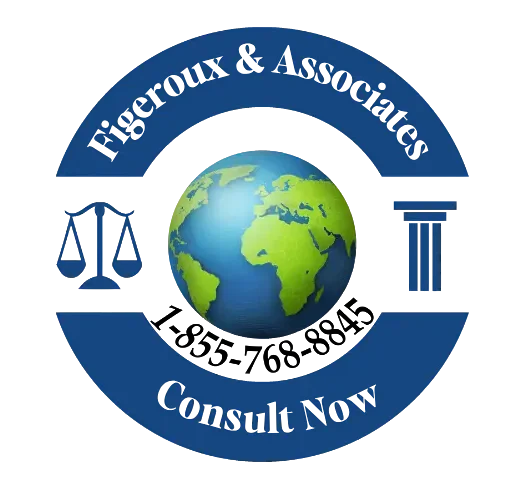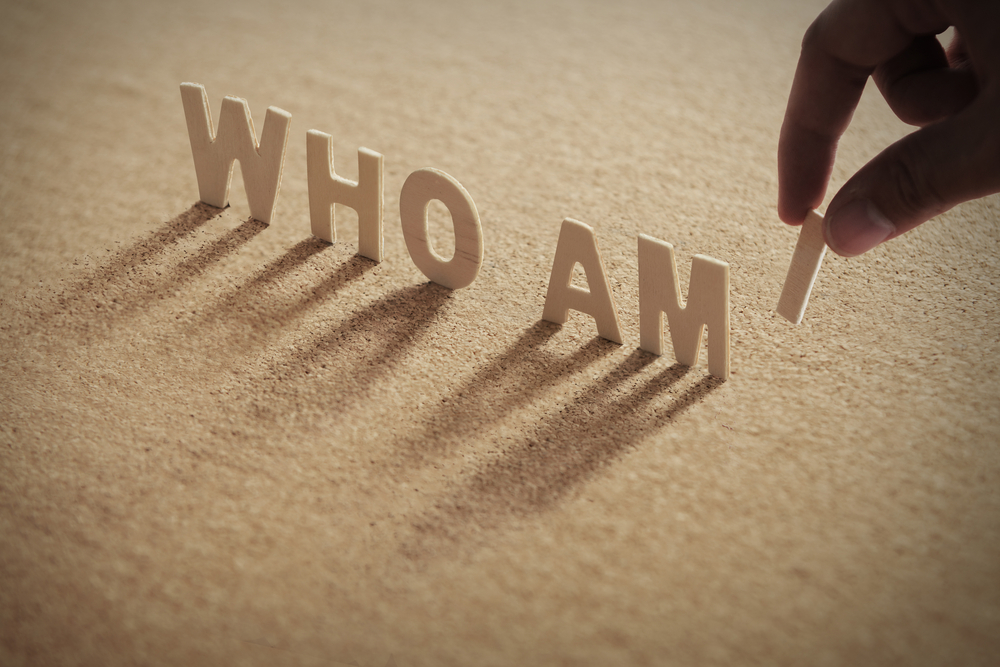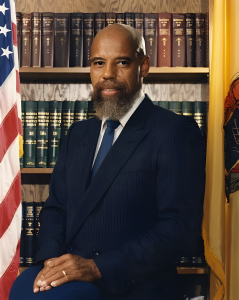By Esther Claudette Gittens
“Who am I?” It’s a question as ancient as human consciousness and as fresh as a teenager’s diary. We ask it in moments of quiet reflection and during chaotic change. Are we simply the sum of our genetics, our choices, our upbringing, our jobs, our gender? Or is there something deeper, more elusive?
Identity is both a puzzle and a performance. It may seem easy to define ourselves by simple labels—male or female, educated or not, a worker or a leader—but these categories barely scratch the surface. We often wonder: is there truly anyone else like me? Am I shaped by my free will, or am I a product of cultural programming and family conditioning?
This article explores the multifaceted question of human identity, diving into the interplay of biology, upbringing, social roles, and personal choices. We’ll explore whether our characteristics are inherently ours or molded by forces beyond our control. We’ll examine whether we are unique individuals or archetypes playing out roles written long before we were born.
In doing so, we seek not to pin down a definitive answer but to explore the permutations and combinations that make each human being a dynamic, evolving narrative.
- The Layers of Identity
Human identity is not a monolith; it is a mosaic. It is composed of layers that reveal and conceal, depending on who is asking and what context we are in. At the most basic level, we have physical identity—our sex, race, and age. These are often the first characteristics others notice, and unfortunately, they can be the basis for immediate assumptions, stereotypes, or treatment.
Beyond the physical lies our social identity—roles we assume in society such as parent, student, manager, or friend. These roles shape how we behave, speak, and even think. Someone may act differently at work than at home, not because they are fake, but because identity shifts fluidly between contexts. Then there’s psychological identity—our values, desires, fears, and dreams. This internal layer is less visible but often more definitive in how we understand ourselves.
Crucially, identity is not static. It evolves. A person who once identified as shy may grow to see themselves as confident. Someone born into one culture may adopt the norms and language of another. Personal identity can even change with mood, mental health, or new life experiences.
At times, these layers are in harmony. At other times, they conflict. A woman may be biologically female (physical), a CEO (social), and a nurturing caregiver (psychological). If society tells her she can’t be all three at once, it creates a tension in her identity.
Ultimately, identity is not just “who we are” but who we are becoming. It is an ongoing negotiation between how we see ourselves, how others see us, and how we respond to those perceptions. The complexity of identity makes it impossible to reduce a person to a single category or trait—and yet, we try, because it’s simpler that way.
- Nature and Nurture
The debate between nature and nurture has persisted for centuries, shaping how we understand human behavior and identity. Are we born with a predetermined set of characteristics, or are we molded by the environment around us? The answer, as with most human questions, lies somewhere in between.
Nature refers to the biological inheritance we receive from our parents—our genes. These include not only physical traits like eye color or height, but also behavioral tendencies such as temperament, risk tolerance, or even certain intellectual inclinations. A child may be born with a predisposition to be introverted, energetic, or emotionally sensitive. Studies of identical twins separated at birth show astonishing similarities, hinting at the power of genetics in shaping who we are.
But nurture is equally influential. It encompasses the environment in which we are raised: our family, culture, education, and social circumstances. A child with a genetic gift for music may never discover it without exposure or encouragement. Likewise, someone born with a predisposition toward anxiety may learn to manage it—or have it amplified—depending on their upbringing.
The interplay of nature and nurture is not a tug-of-war but a dance. One influences the other in dynamic ways. Genes can be turned “on” or “off” based on environmental triggers, a process called epigenetics. This means that our experiences—trauma, education, relationships—can alter the very way our biology expresses itself.
In essence, we are born with a framework, but the environment paints the picture. Our lives are not scripts written in stone, but malleable blueprints, responsive to context. Recognizing the influence of both nature and nurture allows us to understand that while we may be shaped by forces beyond our control, we also possess the agency to reshape ourselves.
- Gender and Social Roles
Few aspects of identity are as immediately visible—and as socially loaded—as gender. From birth, we are sorted into categories: boy or girl. These labels carry expectations, stereotypes, and life scripts. But is gender purely biological, or is it a social construct? The answer again lies in complexity.
Biological sex is assigned at birth based on physical characteristics. Yet gender identity—how we perceive ourselves—may align or differ from that assignment. Increasingly, societies are acknowledging that gender is not binary but exists on a spectrum. People may identify as male, female, both, neither, or fluctuate between identities.
The role of society in shaping gender is immense. From colors (“blue for boys, pink for girls”) to careers (“men lead, women nurture”), we are surrounded by subtle and overt messages about what it means to be male or female. These social roles are internalized, often unconsciously, influencing how we speak, dress, choose professions, and express emotion.
For instance, a boy who expresses sensitivity may be told to “man up,” while a girl showing assertiveness might be labeled “bossy.” These early experiences mold identity and behavior, sometimes in ways that contradict an individual’s true inclinations.
As societal norms shift, we are witnessing more people rejecting traditional roles in favor of authentic self-expression. This transition invites us to consider that gender may be less about what we are and more about how we relate to the world—and how the world responds to us.
In understanding gender as both biological and social, we see that identity is not a fixed destination but a lived experience, shaped by interaction, choice, and change.
- The Influence of Early Life and Parental Conditioning
If identity is a layered composition, then childhood is the canvas on which the first strokes are painted. The earliest years of our lives are a critical period where foundational aspects of who we are—our sense of safety, love, value, and possibility—are laid down, often before we have the words to describe them.
Parents, whether they intend to or not, act as our first mirrors. Their actions, attention, and emotional availability send powerful messages: “You matter,” or “You are a burden.” These impressions become internalized as beliefs that shape adult behavior. A child praised for independence may grow into a confident decision-maker. A child criticized for expressing emotion may learn to suppress feelings, resulting in emotional distance later in life.
Psychologists like Freud and Erikson emphasized the role of early relationships in personality development. More modern thinkers highlight attachment theory, which suggests that the way a child bonds with caregivers affects how they form relationships as adults.
It’s not only what parents say or do, but how they live. Children absorb family dynamics, financial stress, attitudes toward work, education, and even gender roles. These messages form unconscious scripts we follow well into adulthood, sometimes without question.
Yet, as influential as childhood is, it doesn’t completely define us. Through introspection, therapy, or conscious growth, many people “reparent” themselves—challenging the beliefs they absorbed early on to rewrite their identity narratives.
Our parents may have given us the first chapters of our story, but we retain the power to change the ending.
- Education, Class, and Occupation
The social world we navigate as adults is deeply influenced by our level of education, socioeconomic class, and occupation. These external markers do more than signal status—they can subtly (and sometimes overtly) shape our sense of self, our ambitions, and the way others perceive us.
Education often serves as a gatekeeper to opportunity. A college degree may open doors to white-collar professions, but beyond qualifications, education cultivates values: critical thinking, conformity, curiosity, or competition. Those with higher education are often socialized to speak and behave in ways that signal competence, authority, or “polish.” In contrast, those with less formal education may be undervalued or underestimated, despite possessing practical intelligence, emotional depth, or resilience.
Occupational identity is another layer. Whether one is a worker, manager, or business owner carries different psychological and social weights. A worker may define themselves through skill and reliability, while a business owner might align identity with independence and risk-taking. Yet these roles are not purely personal—they are shaped by social class, cultural messages, and systemic access.
Society tends to overvalue certain jobs while dismissing others, feeding into internalized ideas about worth. A janitor may see themselves as “less than” a lawyer, even though both contribute to the fabric of society. This hierarchy isn’t just economic; it’s psychological.
However, it’s crucial to question these scripts. Your job is not your soul. Your income is not your intellect. While education and occupation influence how we see ourselves, they should not confine who we believe we can become.
- Are There Millions Like Me?
One of the paradoxes of human identity is the tension between individuality and commonality. On one hand, we like to believe we are unique—irreplaceable combinations of traits, experiences, and dreams. On the other, we often find ourselves part of groups, types, and patterns that repeat across society.
Psychology has long categorized people into broad types—introvert or extrovert, thinker or feeler, leader or follower. Personality tests like the MBTI or the Big Five have attempted to chart the terrain of human variation, offering maps to understand how people differ. These tools reveal not just our differences, but also how many people are remarkably similar.
Culture also gives rise to archetypes: the rebel, the caregiver, the achiever, the dreamer. These roles appear in stories, myths, and media across generations and geographies. When we ask, “Are there millions like me?”—the answer may be yes, in form if not in detail.
But it’s in the details that individuality emerges. No one has lived your exact life. Your specific mix of biology, childhood, cultural context, and personal decisions is unrepeatable. You may resemble others, but your story remains singular.
The trick is to embrace the universal without losing the personal—to see yourself in others, and others in yourself, without erasing what makes you distinctly you.
- The Free Will Debate
Do we choose who we become, or are we following a script written by biology, upbringing, and society? The question of free will lies at the heart of human identity—and remains one of the most debated topics in philosophy and neuroscience.
On the surface, we feel free. We decide what to wear, what to study, whom to love. But delve deeper, and we see how many of these “choices” are influenced—if not dictated—by factors outside our conscious control. Your desire to be a doctor may stem from parental expectations. Your political views might echo the values of your community. Even your moment-to-moment decisions, neuroscience suggests, may originate in the brain milliseconds before you’re aware of making them.
This challenges the idea of pure autonomy. Are we, then, simply reacting—programmed by DNA and environment to perform certain roles?
Some thinkers argue that free will exists, but within limits. It’s not absolute freedom, but conditional freedom: the power to choose how we respond to circumstances, even if we didn’t choose the circumstances themselves. Others suggest free will may be a necessary illusion—essential for moral responsibility, motivation, and personal growth.
In either case, understanding our influences doesn’t remove responsibility—it enhances awareness. The more we know about what shapes us, the more deliberate we can be in shaping ourselves.
- Programmed or Possessed with Possibility?
Are we nothing more than the sum of our programming—biological instincts, societal norms, media influence? Or do we hold within us a spark of something freer, something capable of transcending our conditioning?
Modern life is full of inputs: social media algorithms, advertising, cultural scripts, peer pressure. These forces shape our preferences, opinions, even attention spans. We scroll, click, consume—often without realizing how these external systems guide our behavior. In many ways, we are programmable.
Yet humans have the astonishing ability to self-reflect. Unlike machines, we question our motives, rewrite our beliefs, and sometimes choose paths that defy logic or expectation. A person born into violence can become a healer. A conformist may become a revolutionary.
This capacity to observe ourselves—our habits, thoughts, and assumptions—opens the door to possibility. While we may never be fully free, we are not fully bound either. Identity is a construction, but we are also its architects.
Conclusion
To ask, “Who am I?” is to enter a lifelong dialogue with the self. We are not merely one thing—not only our gender, our job, our education, or our past. We are a layered composition of nature and nurture, shaped by early impressions and ongoing experiences, influenced by class and culture, yet still capable of reinvention.
Perhaps the more important question is not who we are, but how we choose to engage with the forces that shape us. Identity is not a fixed label—it’s a living process. And in that process, however constrained, we find space for choice, growth, and meaning.
Click Here to Schedule a Consultation with Figeroux & Associates Today!




